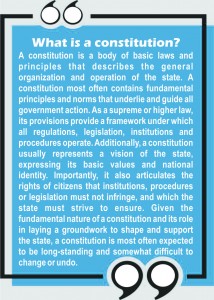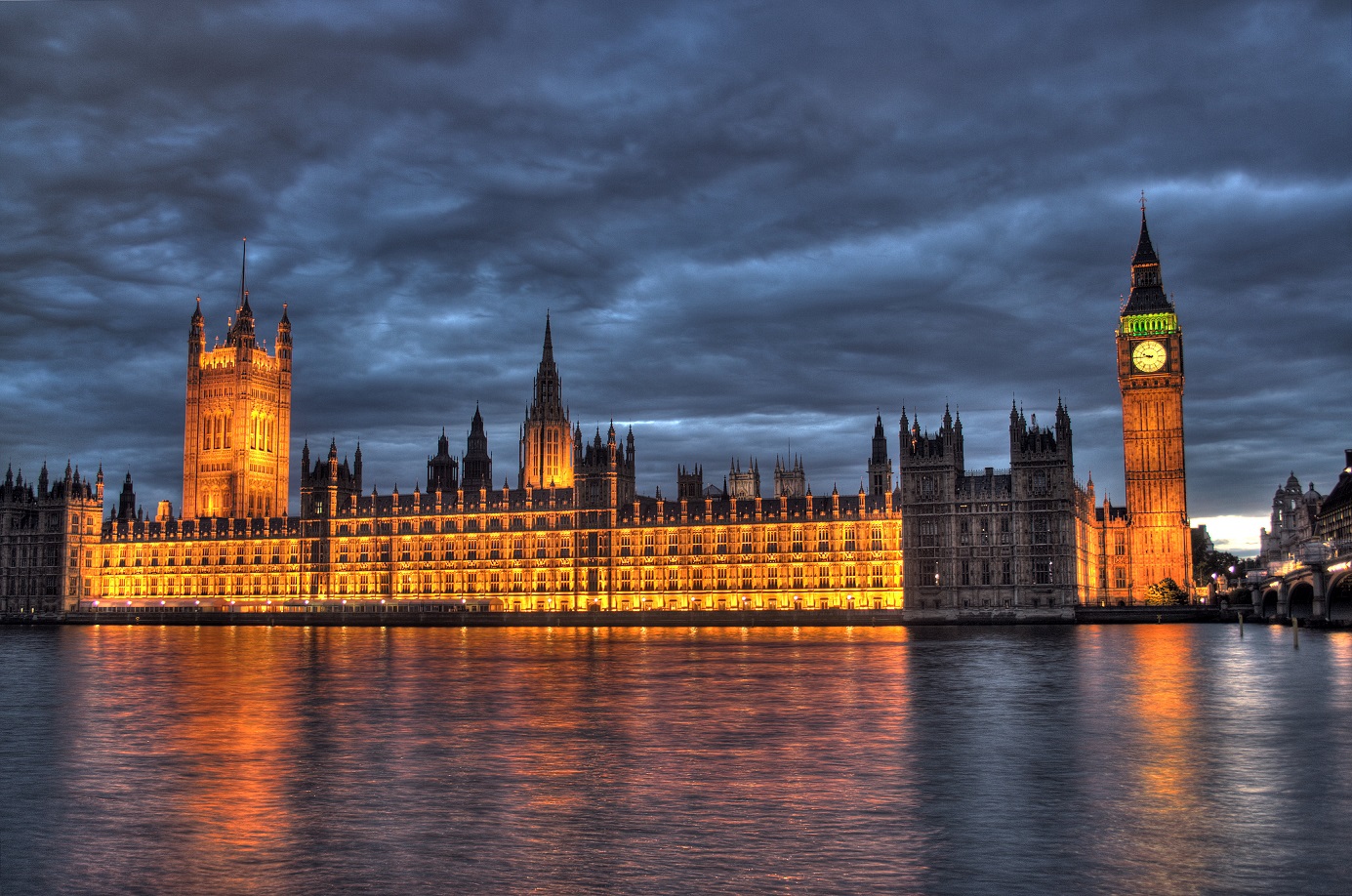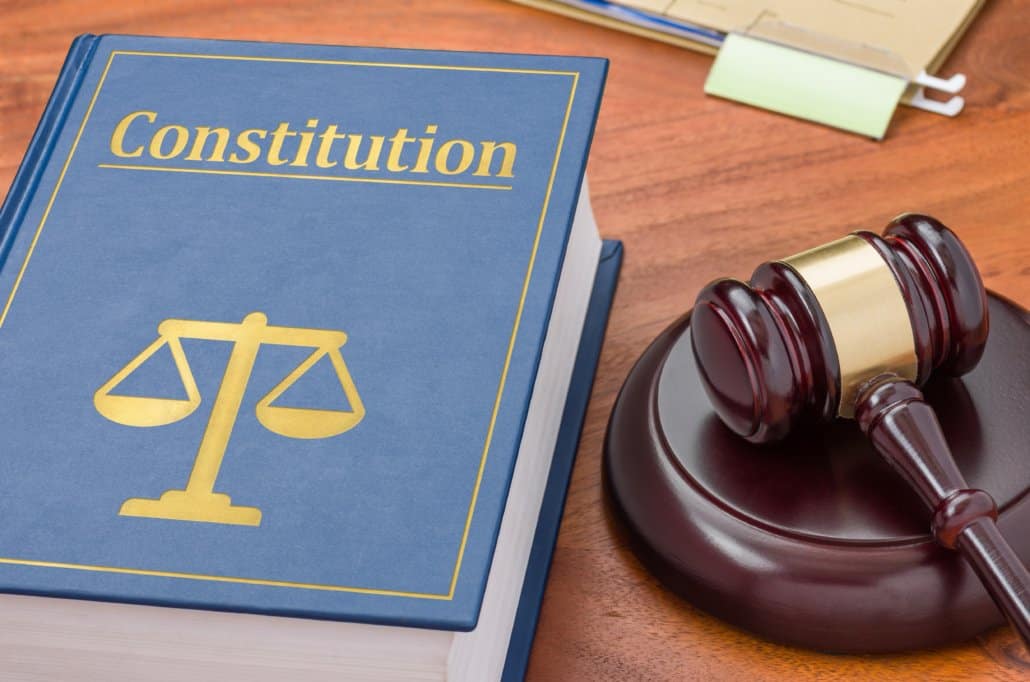CONSTITUTION ESSENTIALS.
Maurice Sunkin opines that defining constitution attracts variants. This way of going about constitution comfortably concedes to academic disagreement and emphatically encourages adaptation to opinion diversification. But it does not help to know what it entails; for example, it does not tell whether it simply means any set of rules or set of constitutional rules or something else. Given that the world constitutions are split into a variety of classifications pursuant to varying contexts, it is difficult to give a one-size-fits-all understanding of a constitution. However, a starting estimation of it is possible and can be gauged from Geoffrey Marshall’s definition who called it a set of legal and non-legal rules of governance, the purpose of which, as UCL Constitution Unit rightly pointed out, is to create, empower and limit state actors. And its defining feature is to evolve with changing times which made Hillarie Barnett call it a living and dynamic organism. Sans this feature, a constitution is entrenched, as is true of the Australian constitution which has approved only eight proposals out of a total of 44; a gap that has weakened its legitimacy. Besides boosting legitimacy, this evolution, inter alia, historical, cultural and political factors, is the impetus for five main divisions of the constitution. Learning these is one of the most effective ways of appreciating a constitution because it gives one lens for its letter and spirit.
The first and the foremost is ‘constitution as a text.’ This is a type of constitution with rules of governance put together in a single document. Its variant names are Capital C constitution, documented constitution, written constitution, codified constitution and ‘The Constitution’. It is usually the by-product of a revolution. Where it is found, the Supreme Court has the power to strike down legislation incompatible with it. Majority of the countries around the world, including our own, have this sort of constitution.
The Constitution of Pakistan, 1973, was the result of the efforts of Zulfikar Ali Bhutto. It has 280 articles and, to date, 26 amendments. Another example is the US constitution which came into force in 1789 and has 7 articles and 27 amendments. Its first three articles clearly set out the structure of the state. Art. 1 vests the legislative power in Congress: a bicameral legislature with House of Representatives as its lower house and Senate as its upper house. Art. 2 vests the executive power in the President with a four-year term of office. Art. 3 vests the judicial power in the Supreme Court and other lower courts created by the Senate. This justifies Andrew Le Sueur’s assertion that ‘constitutions typically have sections on the executive, the legislature and the judiciary.’ The life cycle of these constitutions has three stages: birth, amendment and death. There are several factors responsible for its birth such as independence from imperial control, a world war, internal strife, splitting up of a country and end of a political regime. Its adaptation is achieved through a procedure set out within the Constitution. For example, for constitutional amendments in Pakistan and the United States, a super-majority is required under Articles 239 and V of these constitutions, respectively. It can come to an end through lawful or unlawful means. An example of the former is the dissolution by referendum of the Fourth Republic of France in 1958. And an example of the latter is the seizure of the Greek government by the military junta in 1967.
The second is ‘constitution as a system.’ This is a constitution with rules arising from the larger constitutional order. It looks to culture, history, political practice, judicial practice, legislation, morality and socio-economic realities for the development of rules. It is typically known as the small c constitution. Looking beyond the US constitution shows that the judicial review of legislation was introduced in 1803 by the US judiciary in Marbury v Madison. Similarly, looking beyond Art. 1 of the Constitution of Cyprus manifests that the office of Vice-President is vacant since 1963 because of the political division of the island.
The third is the ‘constitution above the nation-state.’ This entails two governance arrangements at transnational level: supranationalism and intergovernmentalism.
Supranationalism is a governance arrangement under which nation-states agree to delegate limited decision-making responsibility to a forum outside them. An example of this is the European Union, previously known as the European Community. It originated from European Economic Community back in the 1950s. It has twenty-seven member states — after UK’s final exit. These states have given competence to the EU in areas such as trade, competition policy and environment. The Commission, Council and the European Parliament are responsible for making laws in these areas. These institutions are regulated by two treaties namely the Treaty on European Union and the Treaty on the Functioning of the European Union. Intergovernmentalism, on the other hand, is the governance arrangement under which nation-states agree to cooperate with one another in areas of common interest. An example of this is the European Convention on Human Rights. It was created by the Council of Europe in 1947 and has 47 signatory states. It was modelled on the Universal Declaration of Human Rights (1948) and aimed to consolidate rights and protect them against governmental usurpation.
The fourth is ‘constitution below the nation-state.’ This entails two governance arrangements at the national level: federalism and unitary. Federalism is where there are two tiers of governance. One is the national government responsible for matters such as defence, foreign affairs and budget. The other is the regional government responsible for delegated matters which may include education, health and social services and administration of justice. USA, Canada, Germany and Australia are its examples. Unitary is where there is one tier of governance — France, Greece, China and Japan are some pertinent examples in this context.
The last is the uncodified constitution. This is where the rules of governance are not found in a single document. Instead, they are derived from various sources. These may be legal or non-legal. At least in the UK, the former comprises statutes, common law, royal prerogatives, international treaties and international law. The latter comprises constitutional conventions, constitutional principles such as rule of law, parliamentary supremacy, separation of powers and judicial independence and opinions of jurists such as A.V Dicey and Ivor Jennings. Its examples are UK, New Zealand and Israel.
The preceding discussion shows that the learning of constitution from its classifications is the most effective way of going about constitutions. It informs that these sets of legal and non-legal rules of governance create, empower and limit national, intra-national and supra-national structures. It emphasises that these rules vary from place to place and culture to culture. By way of example, the way the legislature was created in the UK is not the same as it was created in the US. The former is the creation of Bill of Rights of 1688 and the latter is the corollary of Art. 1 of the US Constitution of 1789 — although their function remains the same, that is, to create laws. Therefore, although there are many ways to answer the question what is a constitution, the best way to comprehend is to understand its classifications and appreciate the factors that contribute to the creation, empowerment and curtailment of powerful structures.
The author teaches jurisprudence and legal theory at Pakistan College of law, Lahore. She can be contacted at: mawraraja@protonmail.com
 Jahangir's World Times First Comprehensive Magazine for students/teachers of competitive exams and general readers as well.
Jahangir's World Times First Comprehensive Magazine for students/teachers of competitive exams and general readers as well.




